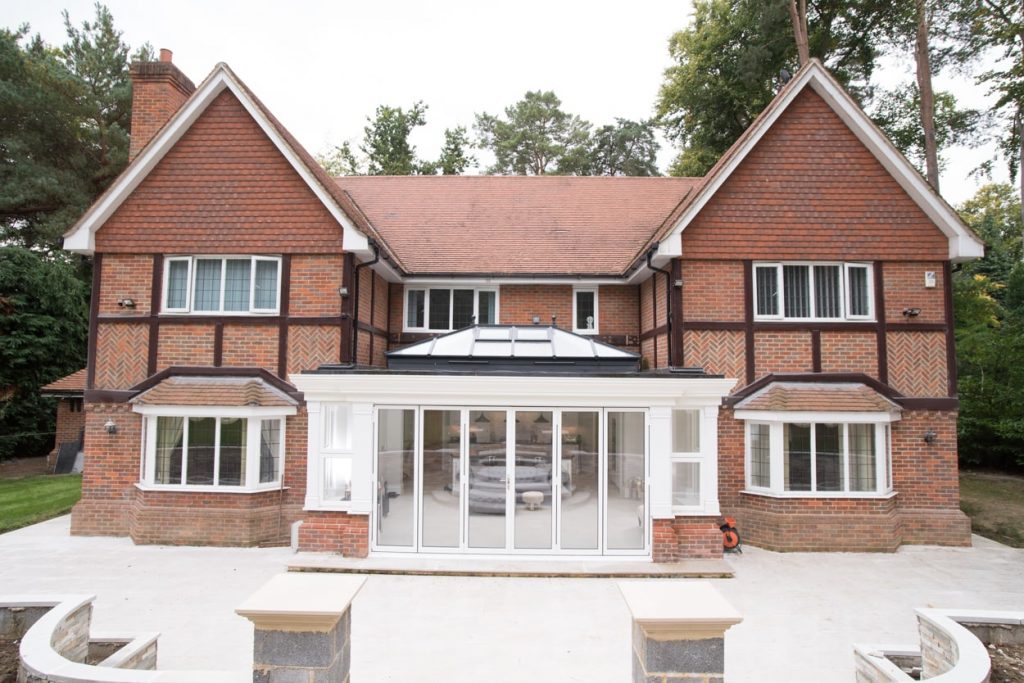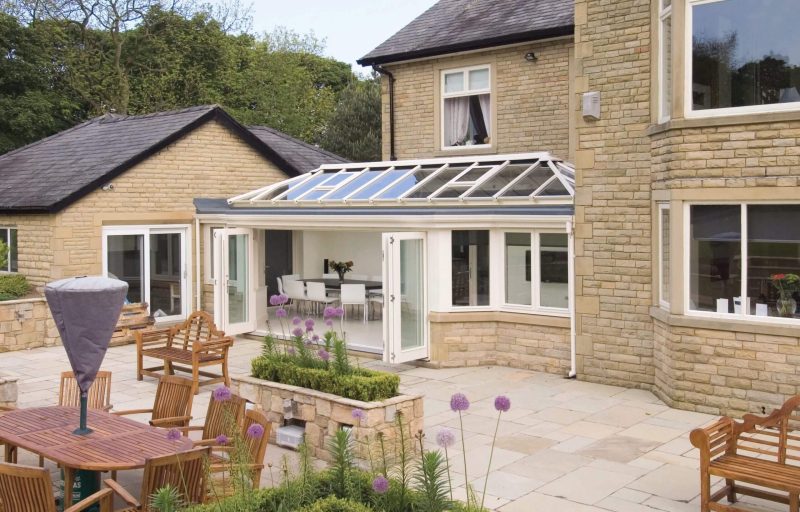Can you build an orangery without planning permission?
An orangery is an elegant and popular type of home extension built in properties across Hampshire and the UK. They use the perfect combination of brick and glass, creating a fantastic additional space in a property.
Classified as a type of extension, many homeowners looking to build an orangery for their property may have questions around building regulations and planning permission.
So, in this blog, we’ve explored this topic in more detail, looking closely at what permissions are needed for building a brand-new orangery.
What is an orangery?
Originating from the 17th century as part of renaissance gardens, orangeries were seen at that time as a luxury for the wealthy. They were often built separately from the main house and would have a brick or stone base to support the glass panes.
Today, orangeries are still typically built from stone or bricks but also feature large windows and incorporate glass lanterns into the flat roof design.
An orangery becomes an integral part of a home and is the perfect mix between a conservatory and single-storey extension. Not only does it create a light and vibrant additional living space but it’s also an incredibly cost-effective home improvement, offering the best of both worlds for homeowners.

Do you need planning permission for an orangery in Hampshire?
If you’re thinking of extending your Hampshire home by building an orangery, you’ll need to explore UK planning permissions to get a basic idea of whether the rules will affect you or not.
When it comes to identifying if you need planning permission for your orangery, there’s a couple of restrictions to be aware of.
The first thing you need to know is that as orangeries are classified as extensions which means they fall under the same rules you’d find when building an extension on your property.
Ultimately, this means you won’t need planning permission if…
- The orangery won’t be larger than half of the area of land around the original house
- The orangery isn’t higher than the tallest part of the existing roof – or higher at the eaves than the existing eaves
- The height of the eaves can’t exceed three metres when within two metres of the boundary
- The orangery doesn’t include raised platforms, verandas or balconies
Where you choose to build your orangery is also an incredibly important factor and depending on whether you pick the front, back or side of your house there’s a few things worth noting.
Find the Perfect Orangery for your Home

Building an orangery at the back of the house
For those opting to build an orangery at the rear, you won’t need planning permission if the orangery doesn’t extend more than eight metres from the rear wall if the property is detached, and six metres for both a semi-detached or terraced house.
If an orangery exceeds four metres from the rear wall of the property, the homeowner must inform their local council before any building work can take place.
Building an orangery to the side of the house
If you’d prefer to build the orangery to the side of the house, the orangery can only be up to half the width of the original house. Building to this size means you won’t require planning permission.

Finding the perfect orangery for your Hampshire home
Using a perfect blend of traditional bricks and mortar and high-quality glazing an orangery easily becomes an elegant and beautiful addition to your home.
At Sherborne we have more than 30 years’ experience working with homeowners in Hampshire to create bespoke orangery designs. With a variety of colour finishes, decorative flourishes for the interior and exterior each project is truly unique.
Our team of experts will work closely with you throughout the whole process to understand your needs and build the perfect extension of your home.
What’s more, once the build is done the work doesn’t stop there. We offer all of our customers a 10-year guarantee and access to our aftersales service to guarantee they can get the most from their new product.
Get in touch today to tell us about your next home improvement project.

















